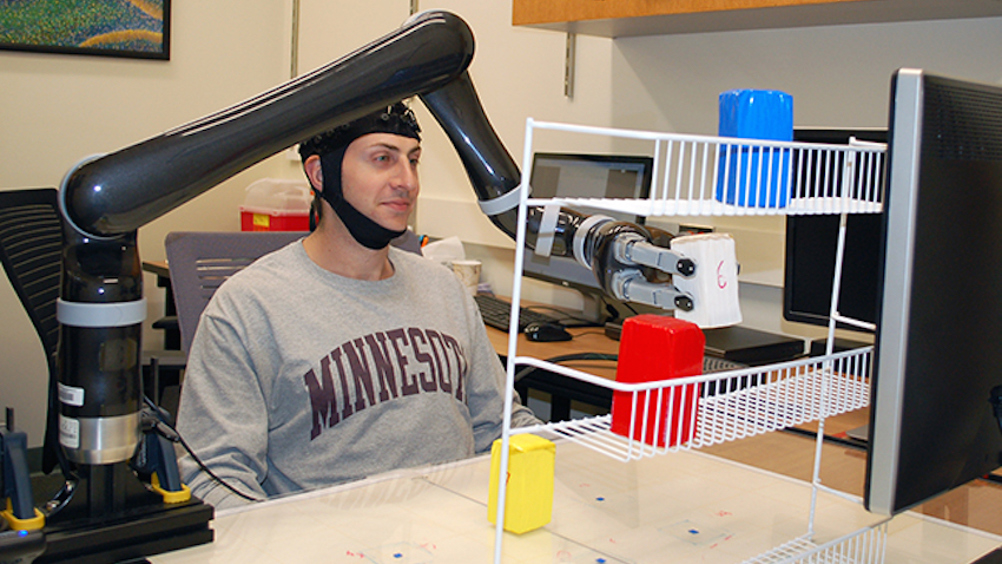Video of the week: robotic arm controlled by thoughts
This week’s video comes from the US mid-west where thoughts are being used to control a robotic arm.

The research from the University of Minnesota has the potential to help those with paralysis or neurodegenerative diseases.
The study is published by Scientific Reports in a paper titled Noninvasive Electroencephalogram Based Control of a Robotic Arm for Reach and Grasp Tasks.
“This is the first time in the world that people can operate a robotic arm to reach and grasp objects in a complex 3D environment using only their thoughts without a brain implant,” said Bin He, a University of Minnesota biomedical engineering professor and lead researcher on the study. “Just by imagining moving their arms, they were able to move the robotic arm.”
According to the University, the non-invasive technique, - electroencephalography (EEG) based brain-computer interface - records weak electrical activity of the subjects’ brain through a specialised EEG cap fitted with 64 electrodes and converts thoughts into action by advanced signal processing and machine learning.
Register now to continue reading
Thanks for visiting The Engineer. You’ve now reached your monthly limit of news stories. Register for free to unlock unlimited access to all of our news coverage, as well as premium content including opinion, in-depth features and special reports.
Benefits of registering
-
In-depth insights and coverage of key emerging trends
-
Unrestricted access to special reports throughout the year
-
Daily technology news delivered straight to your inbox










Water Sector Talent Exodus Could Cripple The Sector
Maybe if things are essential for the running of a country and we want to pay a fair price we should be running these utilities on a not for profit...